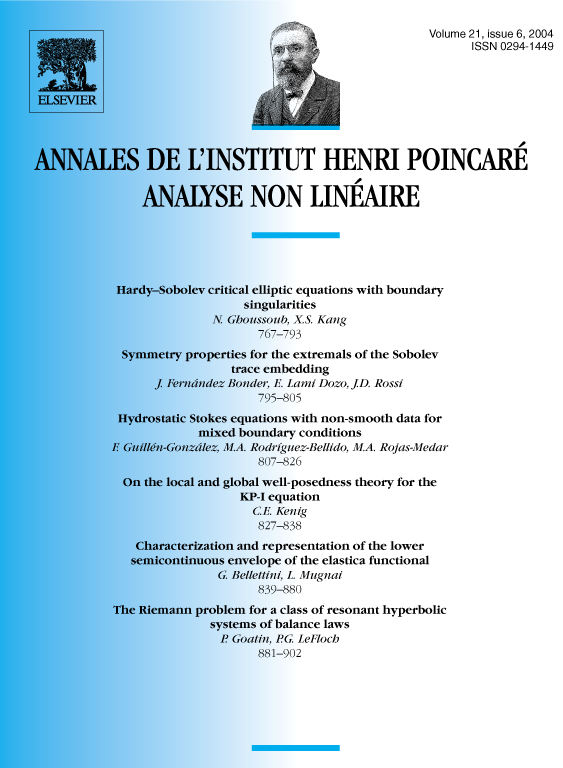Hardy–Sobolev critical elliptic equations with boundary singularities
N. Ghoussoub
Pacific Institute for the Mathematical Sciences, and Department of Mathematics, The University of British Columbia, Vancouver, BC V6T 1Z2, CanadaX.S. Kang
Pacific Institute for the Mathematical Sciences, and Department of Mathematics, The University of British Columbia, Vancouver, BC V6T 1Z2, Canada

Abstract
Unlike the non-singular case , or the case when 0 belongs to the interior of a domain in (), we show that the value and the attainability of the best Hardy–Sobolev constant on a smooth domain ,
when , , and when 0 is on the boundary are closely related to the properties of the curvature of at 0. These conditions on the curvature are also relevant to the study of elliptic partial differential equations with singular potentials of the form:
where is a lower order perturbative term at infinity and . We show that the positivity of the sectional curvature at 0 is relevant when dealing with Dirichlet boundary conditions, while the Neumann problems seem to require the positivity of the mean curvature at 0.
Résumé
Contrairement au cas non-singulier , ou au cas d’une singularité à l’intérieur d’ un domaine de (), on montre que la valeur de la meilleure constante dans l’inégalité de Hardy–Sobolev sur un domaine régulier,
quand , , et quand 0 appartient à la frontière, est étroitement liée aux propriétés de la courbure de en 0. Ces mêmes conditions sur la courbure sont aussi pertinentes pour l’existence de solutions d’équations à potentiel singulier de la forme :
où est une perturbation d’ordre inférieur à l’infini et . On montre que la positivité de la courbure sectionelle est suffisante pour l’existence de solutions des problèmes avec conditions de Dirichlet au bord, tandis que pour les problèmes de Neumann, c’est la positivité de la coubure moyenne qui compte.
Cite this article
N. Ghoussoub, X.S. Kang, Hardy–Sobolev critical elliptic equations with boundary singularities. Ann. Inst. H. Poincaré Anal. Non Linéaire 21 (2004), no. 6, pp. 767–793
DOI 10.1016/J.ANIHPC.2003.07.002